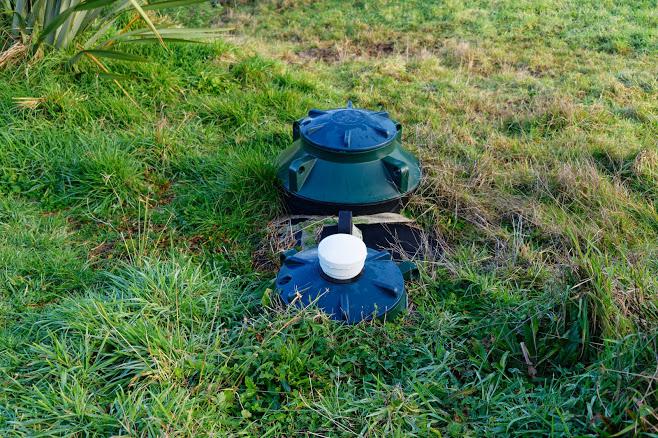When to Have Your Septic Tank Checked for Structural Damage
Admin • May 21, 2020

You've probably heard that you should never drive over a septic tank, leach field, or other portion of the septic system. This is partially because you could damage the system and partially because the tank could present a collapse hazard when subjected to an enormous amount of pressure.
To be extra safe, you should also avoid walking over the tank area or standing on a lid or other septic tank access point. And if you notice any red flags that could mean the tank is at risk of collapse, you should call a professional for an inspection and possible repairs.
Here are some of the signs you should look out for that may mean your tank is structurally compromised or otherwise at risk of collapse.
Lack of Maintenance or Old Age
First on the list is a tank that's poorly maintained or very old. If you've just moved into a home with a system that you suspect is older or less well-maintained than you were told, a full professional inspection is in order.
The less professional attention your tank has over the decades, the more easily it can develop a structural weakness undetected. So you should be automatically suspicious of a tank that's very old or poorly maintained, until it has had a thorough structural inspection by a trusted professional.
Concrete Tank
A concrete tank is vulnerable to a specific type of damage that fiberglass and plastic tanks aren't susceptible to. The gases in the tank can condense into an acid on the concrete's surface and cause corrosion. A tank that's not properly installed and ventilated is more likely to suffer from severe corrosion due to these gases, which can weaken the concrete over time.
You may need to ask your septic professional to check your tank for corrosion and for any structural weakness that could result. (For safety reasons, you should never remove your tank's lid, enter the tank, or stick your head into the tank. The same gases that can cause corrosion, and others that could be present, can be hazardous to your health.)
Relevant installation problems include things like an inlet pipe that doesn't end near the wall of the tank but ends too close to the baffle instead. An inlet pipe that's not installed firmly in the ground but ends up settling a bit can also cause a problem since this changes the angle at which the pipe enters the tank.
If you know the tank wasn't installed by an experienced professional, you should be especially suspicious that it could have one of these problems. Other issues with the tank itself, such as poor construction, may also come into play here.
Earthquakes or Heavy Machinery
If someone accidentally drives over your septic tank in an RV, you may metaphorically hold your breath for a couple of days and then assume everything is fine because the system still seems to work as normal. However, just because the system still processing wastewater doesn't necessarily mean the tank is still structurally sound. It may collapse later if it sustained damage.
Heavy machinery or earthquakes can also damage the structure of your septic tank. So if you know that any of these or other known stressors have occurred, consider calling your contractor out for a structural inspection.
Frequent Freezing
A frozen septic tank typically just means you'll have to pay a professional to thaw it. Freezing up doesn't necessarily damage your septic tank, but it can in some cases: extreme cold has been known
to cause cracks in concrete tanks. As you can imagine, cracks may not only cause leaks but also damage the tank's structural soundness over time.
So anytime your tank freezes up and you have a septic professional come out to thaw it, be sure to have them check for new cracks as well.
Visible Damage or Other Known Problems
Finally, if you notice any visible damage to above-ground septic components (like the lid) or notice any suspicious septic symptoms, you should get your septic tank checked both for function and for structural integrity. Even if you don't know what caused the damage, it could have damaged the below-ground portions of the system as well as visible ones.
As you can see, a variety of issues can result in a structural weakness in your septic tank. Staying on the lookout for these signs can help alert you to any situations in which your tank may require an inspection for structural problems.
Keeping an eye on the tank's structural integrity and ensuring nobody walks or drives over the area can help minimize any risk of the tank falling in. Together with safety features like locking riser lids and riser screens, your monitoring and the attention of your septic contractor can help avoid hazards to health and safety.
For more information on septic tank inspections and maintenance, to learn more about the type of septic system you have, or to inquire about safety features like a locking riser lid, get in touch with Walters Environmental Services
today. We offer a variety of septic services in the central Pennsylvania area.




